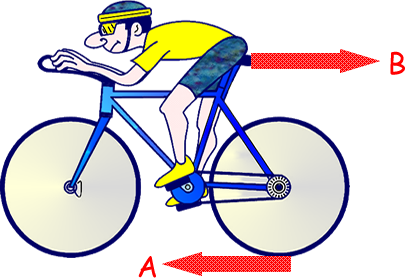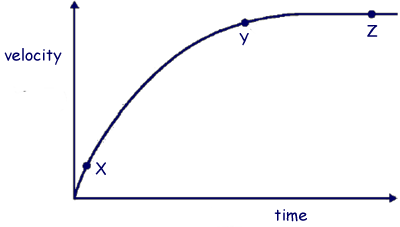GCSE Questions: Forces
Q1. The diagram below shows the horizontal forces acting on a moving bicycle and cyclist.

(a)
(i) Which of the following causes force A?
| X |
friction |
| Y |
gravity |
| Z |
weight |
[1 mark]
(ii) What causes force B?
[1 mark]
(iii) The graph shows how the velocity of the cyclist changes during the first part of a journey along a straight and level road. During this part of the journey the force applied by the cyclist to the bicycle pedals is constant.

Describe how and explain, in terms of the forces A and B, why the velocity of the cyclist changes:
 between the points X and Y marked on the graph and
between the points X and Y marked on the graph and
 between the points Y and Z, marked on the graph.
between the points Y and Z, marked on the graph.
[6 marks]
(b)
(i) The cyclist used his brakes to slow down and stop the bicycle.
A constant braking force of 140 N stopped the bicycle in a distance of 24 m.
Calculate the work done by the braking force to stop the bicycle.
[4 marks]
(ii) Complete the following sentences.
When the brakes are used, the bicycle slows down. The kinetic energy of the bicycle .................................... At the same time, the ...................................of the brakes increases.
[2 marks]
[13 Marks TOTAL]



